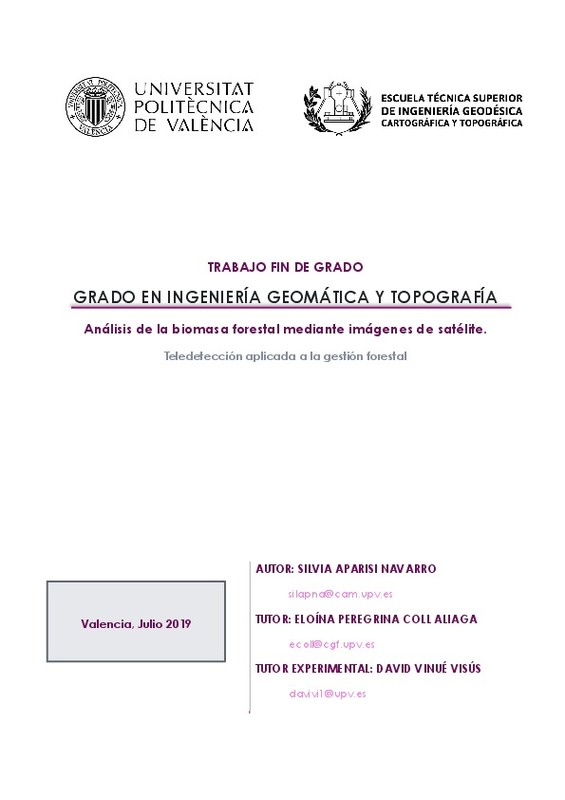|
Resumen:
|
[ES] Las masas de Pinus halepensis Mill. representan el 62% de las masas arboladas de la Comunidad Valenciana y por lo tanto tienen una gran importancia en la fijación de carbono de nuestro entorno. Estas masas a su vez, ...[+]
[ES] Las masas de Pinus halepensis Mill. representan el 62% de las masas arboladas de la Comunidad Valenciana y por lo tanto tienen una gran importancia en la fijación de carbono de nuestro entorno. Estas masas a su vez, tienen un riesgo de emisión de carbono a la atmósfera en ciertos casos, como los incendios.
Los inventarios forestales son una manera fiable de conocer el estado de nuestros bosques, y los datos que en ellos se recopilan nos sirven para calcular mediante el uso de ecuaciones alométricas la cantidad de biomasa presente en cada parcela, así como el stock de carbono presente en dicha biomasa. Sin embargo, estos inventarios requieren de tiempo, personal y recursos para su realización.
A partir de un pequeño inventario forestal e imágenes Sentinel-2, y aplicando un método de aprendizaje automático no paramétrico considerando los valores de reflectividad de las imágenes Sentintel-2 como las variables independientes del modelo, se ha obtenido el mapa de biomasa de pino Carrasco de la Comunidad Valenciana, así como la cuantificación del Carbono presente en dicha Biomasa.
La metodología propuesta en el presente trabajo permitirá estimar los valores de biomasa de un municipio, de una manera rápida y eficaz, disminuyendo tiempos y costes. Los mapas obtenidos pretenden ayudar a la toma de decisiones en la gestión forestal ya que una buena gestión forestal, puede maximizar el crecimiento arbóreo provocando una mayor fijación de carbono, lo que contribuye a la mitigación del cambio climático.
[-]
[EN] Forests of Pinus halepensis Mill. stands for 62% of the total forest area of the Valencian Region and therefore they have a capital importance for carbon sequestration. However, forests in the Mediterranean area have ...[+]
[EN] Forests of Pinus halepensis Mill. stands for 62% of the total forest area of the Valencian Region and therefore they have a capital importance for carbon sequestration. However, forests in the Mediterranean area have a risk of carbon emission to the atmosphere due some catastrophic events as wildfires, e.g.
Forest inventories are a reliable way to know the state of our forests, and the data collected in them are used to calculate, by using allometric equations, the amount of biomass present , as well as the carbon stock present in that biomass. However, these inventories require time, personnel and resources for their implementation.
From a small forest inventory and Sentinel-2 images, and applying a nonparametric automatic learning method, considering the reflectivity values of Sentintel-2 images as the independent variables of the model, the Carrasco pine biomass map of the Valencian Community has been obtained, as well as the Carbon quantification present in that Biomass.
The methodology proposed in this paper will make it possible to estimate the biomass values of a municipality, in a fast and efficient way, reducing times and costs. The maps obtained aim to help decision making in forest management since good forest management can maximize tree growth by causing greater carbon fixation, contributing to climate change mitigation.
[-]
|





![ZIP archive [ZIP]](/themes/UPV/images/zip.png)


